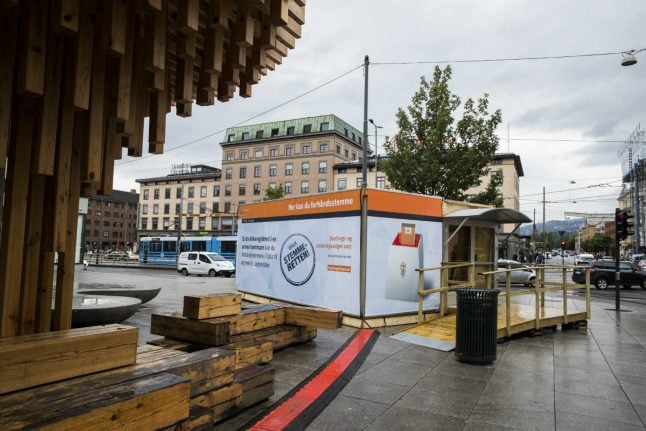A promising context
After an economic slowdown due to plunging oil prices, Norway, the biggest oil producer in western Europe, has bounced back with vigorous growth (0.7 percent in the first and second quarters) and falling unemployment (4.3 percent in June).
To do so, the right-wing government introduced tax cuts of 21 billion kroner (over two billion euros), slashing income and wealth tax, abolishing inheritance tax and granting tax relief for companies.
But the government has been accused of dipping too heavily into the country's enormous sovereign wealth fund of nearly $1 trillion.
The issue of EU membership, rejected by Norwegians twice in 1972 and 1994, has been absent in the election campaign as public opinion remains opposed to membership.
However, in the wake of Brexit, some parties on both the left and the right want to renegotiate Norway's ties with Brussels.
A member of the European Economic Area (EEA), Norway has access to the single market but has to adopt EU regulations without having any voice at the negotiating table.
Small parties as key players
The outgoing right-wing coalition, made up of Prime Minister Erna Solberg's Conservatives and the anti-immigration Progress Party, has campaigned on a promise of continuity by proposing a moderate pursuit of tax cuts. The opposition Labour Party, led by Jonas Gahr Støre, meanwhile wants to reverse some of those tax cuts and raise taxes by up to 15 billion kroner to reduce inequality and bolster the welfare state.
Small parties are set to be the key players in this classic duel and their election scores will be crucial to swinging the pendulum to either the left or right.
READ ALSO: Election 2017: Who’s who in Norwegian politics?
The outgoing minority government has so far relied on the Christian Democratic Party and the Liberal Party to pass legislation in parliament.
Meanwhile the Labour Party, the agrarian Centre Party, the Socialist Left and the smaller Marxist party Red are determined to topple the government.
The Green Party (MDG) describes itself as independent and says it is ready to negotiate with the two blocs, but refuses to support a government that includes the Progress Party.
What about the extremes?
The historically “radical” parties — the right-wing Progress Party and the Socialist Left (SV) — can come across as “soft” compared to other European fringe parties, although the Progress Party, which joined the coalition government in 2013, still receives criticism for its tough anti-immigration rhetoric.
The Socialist Left ruled with the Labour Party, led by former prime minister Jens Stoltenberg, between 2005 and 2013, while the Red party is too marginalised to have any real political influence.
A proportional and secure vote
Norway's 169 members of parliament are elected under a proportional system. Nineteen of these mandates are distributed among the parties that have won more than four percent of votes, a threshold that is therefore crucial for small parties.
As a precaution, the government has asked all municipalities to conduct at least one manual count of ballots, including those using automatic scanning.
Oslo said it had not detected any signs of attempted hacking but justified this measure as necessary to strengthen voter confidence.
Multiple possible scenarios
A status quo, a more or less broad-based left-wing coalition, or a Conservative or a Labour minority government? Political scientists have listed a dozen possible post-election scenarios.
Opinion polls indicate a tight race, with the outcome hanging on the small parties' ability to surpass the fateful four percent mark.
Five of them are hovering around this figure in the latest polls.
Whatever the election night result, it may take some time to compose the next government.
READ MORE: All the news from the build-up to Norway's general election


 Please whitelist us to continue reading.
Please whitelist us to continue reading.